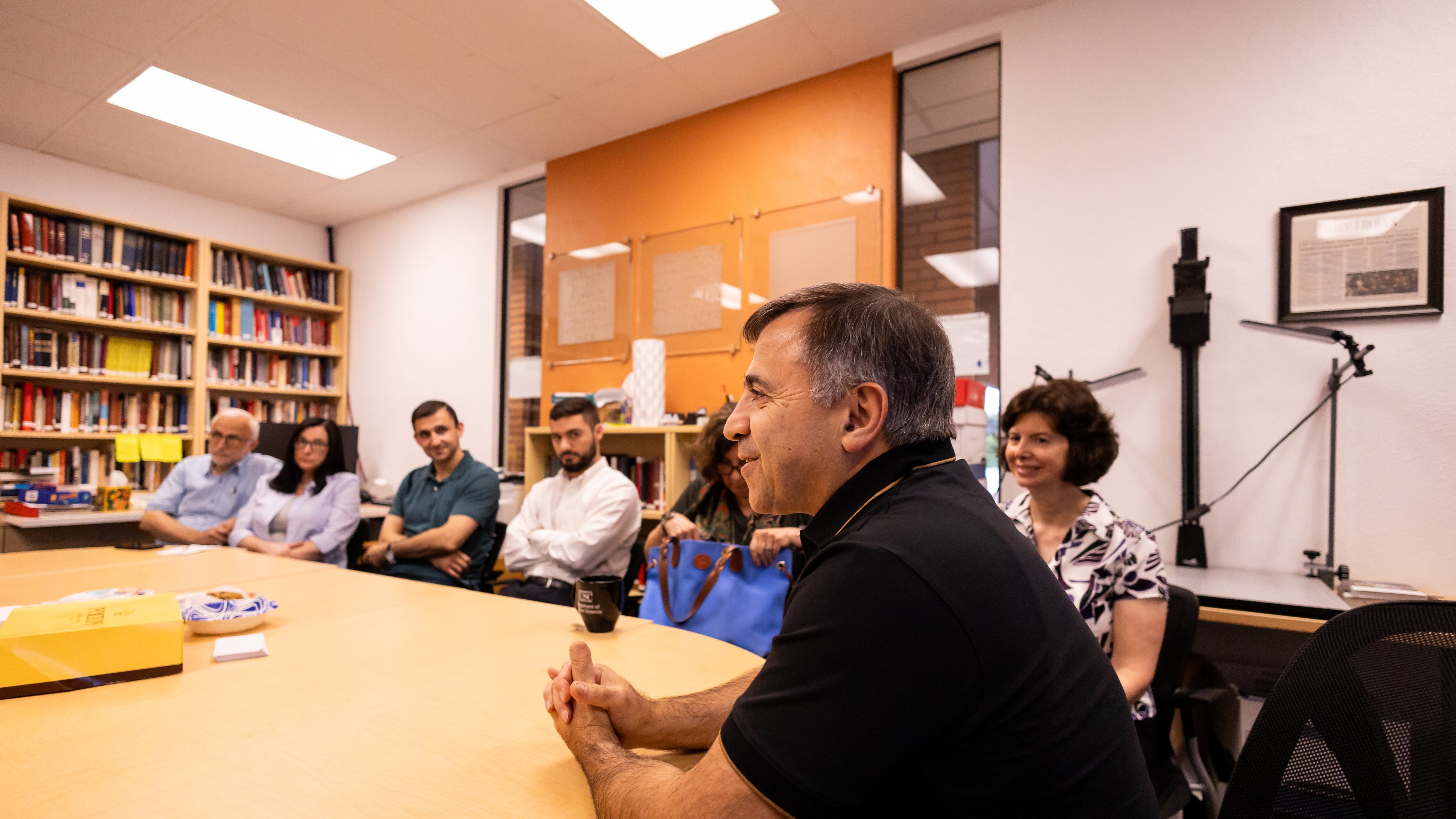In the early 20th century, the Ottoman Empire set out to wipe out the Armenian population, ultimately killing 1.5 million Armenians, a third of the population. Armenians fled to nearby Iran, Lebanon and Russia, and all the way to the West Coast of the United States.
Over 50 years later, the Lebanese civil war and the Iranian Revolution drove out even more Armenians from the Middle East, who, for the second time in their short history, were displaced. This led to another wave of emigration to the United States, with 18,500 Armenians moving to the U.S., according to Armenia’s Office for Diaspora Affairs.
Fast forward to today, Armenians make up approximately 40% of Glendale’s population, and represent a large part of the USC student population.
World-renowned Armenian linguist Hrach Martirosyan delivered his final lecture as the inaugural Seminal Scholar-in-Residence at the USC Dornsife Institute of Armenian Studies Wednesday.
With a full house in attendance, Martirosyan spoke about the two standards of the Armenian language: Modern Eastern Armenian, which is still spoken in the Republic of Armenia and among the global Armenian diaspora, and modern Western Armenian, which was classified as an endangered language by UNESCO in 2010.
He also described the “crucial importance” of preserving both branches of the Armenian language, as well as being able to interpret Armenian dictionaries, explaining “how important and how misguiding it can be…not having the ability of using proper dictionaries.”
“Grammar really matters. Not only the words, but the means by which the words are connected to each other to make a sentence,” said Martirosyan, calling grammar “the essential function of language.”
Martiroysan, a specialist in historical and comparative linguistics, earned his PhD in Comparative Linguistics at Leiden University in the Netherlands. His “Etymological Dictionary of the Armenian Inherited Lexicon” forms part of a larger effort to compile a complete Indo-European etymological dictionary.
Over his six weeks at USC, Martirosyan hosted interactive workshops, mentorship sessions with students and public lectures. In his final lecture at USC, he delved into the development of Armenian as an independent branch of Indo-European linguistics.
Shushan Karapetian, director of the USC Dornsife Institute of Armenian studies, described the importance of bringing Martiroysan’s linguistic background to USC’s Armenian studies department.
Karapetian described “how central and relevant language is to societal discourse, and just how many prevalent myths and non-scientific views there are that tend to depend on emotional, patriotic, nationalistic threads that go against linguistic science.”
“For me, the goal was to invite the leading linguist of our time to set the record straight … on some of these important, controversial issues and bring the best expert in the world to do it,” said Karapetian.
While Armenian is one of the world’s oldest Indo-European languages, it has changed over time to adapt to the everyday speech of its speakers. Karapetian discussed that studying the sounds shifts, word origins and grammar can help the USC community better understand Armenian culture and history.
“Language has taken on a heightened symbolic value for this diasporic [Armenian] people,” said Karapetian. “Those components were important for me to introduce this field, this important field of historical comparative linguistics, to our student body, faculty and community.”
Part of the USC Dornsife Institute, the Seminal Scholars Residency was created to educate on Armenian linguistics and its cultural history. The program brings leaders in Armenian Studies to campus with the goal of creating engagement within the community and the public.
Nare Babakhanian, a student worker at the Institute of Armenian Studies and a sophomore majoring in international relations, said she has attended Martiroysan’s lectures and workshops because she has a specific interest in Armenian linguistics.
“I have a very deep passion in it, because it’s a more marginalized group of people, the ethnic group of Armenians, even though we’re all over the world, the language, the culture, the history, is considered more marginalized,” Babakhanian said.
Aside from learning about Armenian linguistics, Babakhanian said she and other Armenian community members get to connect with each other at Martiroysan’s events.
“Even though a lot of the people in the audience were not my age, just the fact that they were Armenian, I felt very connected,” Babakhanian said. “I felt a very familiar and warm connectedness in the room.”
